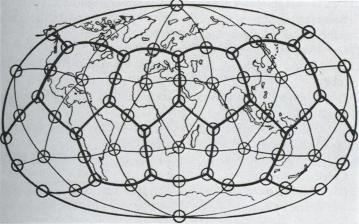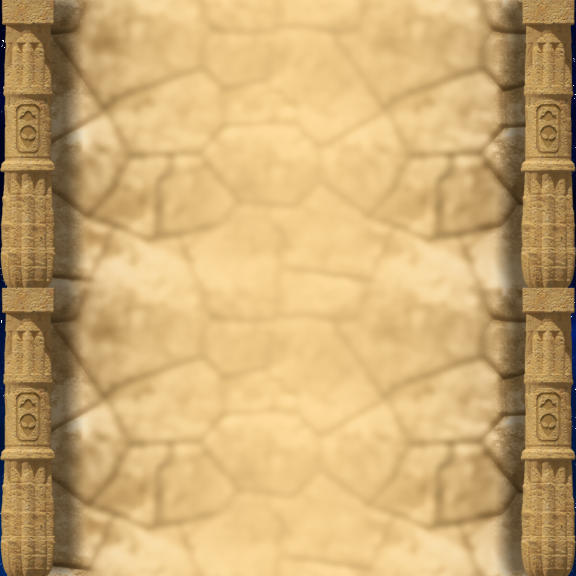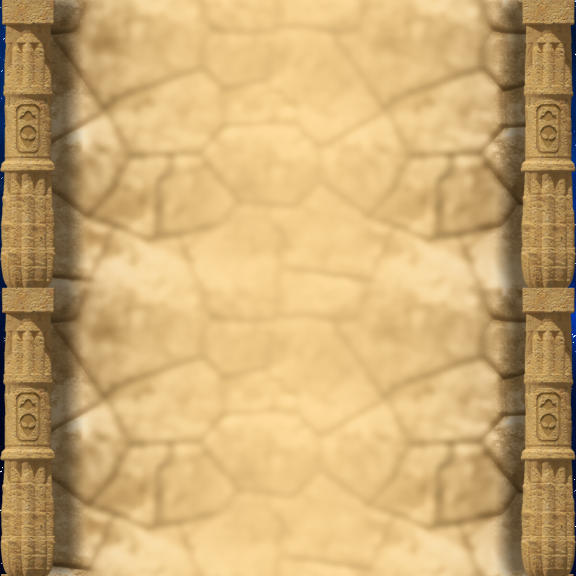





































Article
Curiosities
Editorial for our Magazine SAGENHAFTE ZEITEN
For
45
years,
I
have
maintained
a
squeaky-clean
archive.
Therein
is
a
section
with
the
keyword
“Curiosities.”
For
my
new
book,
Impossible
Truths
[1],
recently
released
by
Kopp
Verlag, I fished a few examples from this collection of impossibilities.
The
great
sand
sea
of
the
Saad
Plateau
is
located
in
south-western
Egypt.
Since
1932,
curious
pieces
of
money-green
glass
have
been
repeatedly
discovered.
Men
call
these
anomalies
Libyan
Desert
glass.
In
July
1999,
the
British
magazine
New
Scientist
wrote
that
over
1000
tons
of
the
strange
material
have
surfaced
to
date,
the
largest
single
piece
weighing
26
kilos.
Initially,
they
suspected
the
glass
must
have
been
created
by
a
meteorite
impact.
But
no
trace
of
a
crater
could
be
found
in
the
vicinity.
Similarly,
even
if
the
hot
gases
of
a
celestial
body
crossed
the
area
without
impact,
there
should
still
be
some
traces,
furthering
the
riddle.
For
this
to
have
occurred,
locations
of
desert
glass
would
be
more
or
less
on
a
straight
line.
But
they
aren’t.
The
glass
is
comprised
of
97%
Silicon,
and
looks
like
a
green-blue
gem.
In
an
analysis
published
in
the
scientific
journal
Nature,
the
geologist
Dr.
Spencer
said:
“It’s
easier
to
assume
that
the
stuff
fell
from
the
sky.” [2].
A
mystery
of
a
different
kind
is
located
in
Patagonia/Argentina.
There,
located
in
the
Deseado
Department,
south
of
the
village
of
Fitz
Roy,
lies
a
strange
National
Park
called
the
Monumento
Natural
Bosques
Petrificados
de
Santa
Cruz.
At
a
typical
National
Park,
you
expect
really
splendid
landscapes,
snow-capped
mountains,
blue
lakes,
and
bizarre
rock
formations.
But
you
will
find
nothing
like
that
at
the
Bosques
Petrificados.
This
is
a
petrified
forest.
Not
a
forest
as
we
imagine
it,
for
though
the
area
is
filled
with
tree
trunks
-
all
of
them
are
petrified.
Experts
estimate
this
petrified
forest
to
be
about
70
million
years
old.
There
is
a
perfectly
natural
explanation
for
these
fossils.
Tens
of
thousands
of
years
ago,
the
cellulose
of
the
wood
turned
to
stone
because
the
trees
were
pelted
by
volcanic
ash
and
stopped
receiving
air.
The
length
of
isolated
trunks
can
be
up
to
50
meters,
with
roots
still
in
the
ground.
Some
fragments,
however,
remain
mysterious.
They
lie
around
the
forest
in
eight
or
12
equal
cut
blocks.
The
cracks
through
the
stems
appear
in
a
manner
that
looks
like
they
have
been
separated
with
a
saw.
Usually,
the
stems
can
be
seen
splitting
into
the
wind,
while
fragments
of
differing
density
are
distributed
throughout
the
trunks.
Regarding
adhesions,
grain
patterns,
and
knots
in
the
growing
branches
-
none
of
these
features
interface
with
the
petrified
trees.
.
Also,
the
individual
pieces
are
often
the
same
length.
Who
was
capable of such sawing millions of years ago?
In
the
early
1970s,
the
Russian
geologist
Dr.
Nikolai
Gontscharow
from
the
Moscow
University
of
Arts
and
Industry
worked
on
a
cultural
atlas
of
the
world.
As
he
stood
in
front
of
the
finished
work,
he
said
it
looked
like
the
five-sided
pieces
of
a
leather
football.
The
markings
of
important
sites
of
all
cultures
revealed
the
impressions
of
a
multi-cornered
football,
where
the
cut
lines
resembled
the
seams
of
a
football
and
ran
along
five
corners.
A Russian newspaper, Kosmosomlskaya Pravda, wrote:
“Many
ancient
cultures
had
no
random
location,
but
were
exactly
at
the
intersections
of
this
system.
So
it
was
with
the
Indus
Valley
civilization
of
Mohenjo-Daro,
Egypt,
Northern
Mongolia,
Newgrange
in
Ireland,
Easter
Island,
Peru,
and
even
Kiev,
the
mother
of
Russian
cities.
Along
the
seam
where
the
gigantic
plates
collide,
stretched
the
petroleum
areas
of
North
Africa
and
the
Persian
Gulf.
The
same
thing
is
observed
in
America
from
California to Texas.” [3].
The
network
showed
ghostly
sections,
where
so
far
no
artefacts
have
been
encountered.
So
the
distance
of
Nazca
in
Peru
to
Giza
in
Egypt
is
the
same
as
the
one
from
Teotihuacan
in
Mexico
to
Giza.
And
Angkor
Wat
in
Cambodia
is
located
equal
distance
from
Mohenjo-Daro
to
Easter
Island
to
Nazca.
Was
there
X-
millennia
ago
-
I
dare
not
even
attempt
to
use
figures
-
something
like
a
Global
Planning
Committee?
Determining
where
groups
of
people
had
to
settle?
Were
the
oldest
cultures
intentionally
situated
on
points
that
had
everything
to
do
with
resources
such
as
petroleum,
minerals,
etc.?
Who
commanded
these
people?
For
what?
And
when
in
the
course
of
time
will
we
admit
that
these
phenomena
have
taken
place,
even
though
they seem like a fairy tale? Does humanity have a legendary past behind it?
Sources:
[1] von Däniken, Erich. Impossible Truths. Rottenburg 2013.
[2] Dating the Libyan Desert Silica Glass. Nature, No. 170, 1952.
[3]
Bodnaruk,
Nikolai:
The
Mysterious
Power
on
the
Globe.
Kosmosomolskaya
Pravda,
Sputnik Sept. 1974.














































Article
Curiosities
Editorial for our Magazine SAGENHAFTE ZEITEN
For
45
years,
I
have
maintained
a
squeaky-clean
archive.
Therein
is
a
section
with
the
keyword
“Curiosities.”
For
my
new
book,
Impossible
Truths
[1],
recently
released
by
Kopp
Verlag,
I
fished
a
few examples from this collection of impossibilities.
The
great
sand
sea
of
the
Saad
Plateau
is
located
in
south-western
Egypt.
Since
1932,
curious
pieces
of
money-green
glass
have
been
repeatedly
discovered.
Men
call
these
anomalies
Libyan
Desert
glass.
In
July
1999,
the
British
magazine
New
Scientist
wrote
that
over
1000
tons
of
the
strange
material
have
surfaced
to
date,
the
largest
single
piece
weighing
26
kilos.
Initially,
they
suspected
the
glass
must
have
been
created
by
a
meteorite
impact.
But
no
trace
of
a
crater
could
be
found
in
the
vicinity.
Similarly,
even
if
the
hot
gases
of
a
celestial
body
crossed
the
area
without
impact,
there
should
still
be
some
traces,
furthering
the
riddle.
For
this
to
have
occurred,
locations
of
desert
glass
would
be
more
or
less
on
a
straight
line.
But
they
aren’t.
The
glass
is
comprised
of
97%
Silicon,
and
looks
like
a
green-
blue
gem.
In
an
analysis
published
in
the
scientific
journal
Nature,
the
geologist
Dr.
Spencer
said:
“It’s
easier
to
assume
that
the
stuff
fell
from
the
sky.”
[2].
A
mystery
of
a
different
kind
is
located
in
Patagonia/Argentina.
There,
located
in
the
Deseado
Department,
south
of
the
village
of
Fitz
Roy,
lies
a
strange
National
Park
called
the
Monumento
Natural
Bosques
Petrificados
de
Santa
Cruz.
At
a
typical
National
Park,
you
expect
really
splendid
landscapes,
snow-capped
mountains,
blue
lakes,
and
bizarre
rock
formations.
But
you
will
find
nothing
like
that
at
the
Bosques
Petrificados.
This
is
a
petrified
forest.
Not
a
forest
as
we
imagine
it,
for
though
the
area
is
filled
with
tree
trunks
-
all
of
them
are
petrified.
Experts
estimate
this
petrified
forest
to
be
about
70
million
years
old.
There
is
a
perfectly
natural
explanation
for
these
fossils.
Tens
of
thousands
of
years
ago,
the
cellulose
of
the
wood
turned
to
stone
because
the
trees
were
pelted
by
volcanic
ash
and
stopped
receiving
air.
The
length
of
isolated
trunks
can
be
up
to
50
meters,
with
roots
still
in
the
ground.
Some
fragments,
however,
remain
mysterious.
They
lie
around
the
forest
in
eight
or
12
equal
cut
blocks.
The
cracks
through
the
stems
appear
in
a
manner
that
looks
like
they
have
been
separated
with
a
saw.
Usually,
the
stems
can
be
seen
splitting
into
the
wind,
while
fragments
of
differing
density
are
distributed
throughout
the
trunks.
Regarding
adhesions,
grain
patterns,
and
knots
in
the
growing
branches
-
none
of
these
features
interface
with
the
petrified
trees.
.
Also,
the
individual
pieces
are
often
the
same
length.
Who
was
capable
of
such
sawing
millions
of years ago?
In
the
early
1970s,
the
Russian
geologist
Dr.
Nikolai
Gontscharow
from
the
Moscow
University
of
Arts
and
Industry
worked
on
a
cultural
atlas
of
the
world.
As
he
stood
in
front
of
the
finished
work,
he
said
it
looked
like
the
five-sided
pieces
of
a
leather
football.
The
markings
of
important
sites
of
all
cultures
revealed
the
impressions
of
a
multi-
cornered
football,
where
the
cut
lines
resembled
the
seams
of
a
football
and
ran
along
five
corners.
A
Russian
newspaper,
Kosmosomlskaya
Pravda,
wrote:
“Many
ancient
cultures
had
no
random
location,
but
were
exactly
at
the
intersections
of
this
system.
So
it
was
with
the
Indus
Valley
civilization
of
Mohenjo-Daro,
Egypt,
Northern
Mongolia,
Newgrange
in
Ireland,
Easter
Island,
Peru,
and
even
Kiev,
the
mother
of
Russian
cities.
Along
the
seam
where
the
gigantic
plates
collide,
stretched
the
petroleum
areas
of
North
Africa
and
the
Persian
Gulf.
The
same
thing
is
observed
in
America from California to Texas.” [3].
The
network
showed
ghostly
sections,
where
so
far
no
artefacts
have
been
encountered.
So
the
distance
of
Nazca
in
Peru
to
Giza
in
Egypt
is
the
same
as
the
one
from
Teotihuacan
in
Mexico
to
Giza.
And
Angkor
Wat
in
Cambodia
is
located
equal
distance
from
Mohenjo-Daro
to
Easter
Island
to
Nazca.
Was
there
X-millennia
ago
-
I
dare
not
even
attempt
to
use
figures
-
something
like
a
Global
Planning
Committee?
Determining
where
groups
of
people
had
to
settle?
Were
the
oldest
cultures
intentionally
situated
on
points
that
had
everything
to
do
with
resources
such
as
petroleum,
minerals,
etc.?
Who
commanded
these
people?
For
what?
And
when
in
the
course
of
time
will
we
admit
that
these
phenomena
have
taken
place,
even
though
they
seem
like
a
fairy
tale?
Does
humanity have a legendary past behind it?
Sources:
[1]
von
Däniken,
Erich.
Impossible
Truths.
Rottenburg 2013.
[2]
Dating
the
Libyan
Desert
Silica
Glass.
Nature,
No. 170, 1952.
[3]
Bodnaruk,
Nikolai:
The
Mysterious
Power
on
the
Globe.
Kosmosomolskaya
Pravda,
Sputnik
Sept. 1974.







